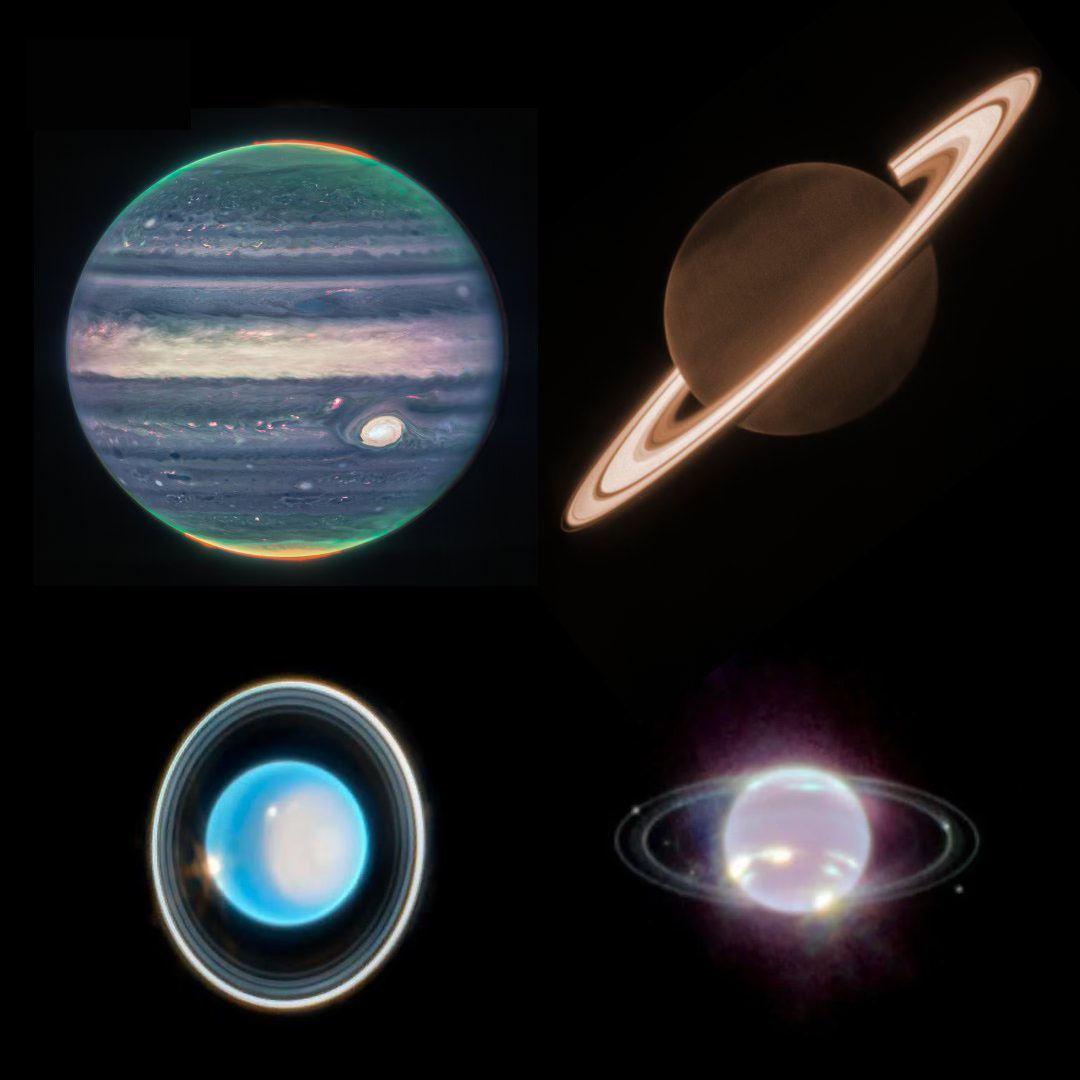The JWST's image of Jupiter is particularly stunning. The telescope's infrared vision allows us to see through Jupiter's thick clouds, revealing the planet's swirling atmosphere and its Great Red Spot. The planet's haze and auroras steal the show.
Post
The JWST's images of Saturn are also remarkable. The telescope's sharp vision allows us to see the planet's rings in great detail. They appear as vibrant, thick bands glowing with a snowy hue, effortlessly upstaging the muted Saturn lurking in the background. The image also shows Saturn's atmosphere, which is a swirling mass of clouds and storms.
Next, we have the images of Uranus and Neptune. The telescope's infrared vision allows us to see these planets' atmospheres in great detail. We can see the clouds and storms that swirl around these planets, as well as the different colors of their atmospheres. Uranus and Neptune are the least explored planets in the solar system, with Voyager 2 being the only spacecraft to have visited them in the 1980s.
Credit: NASA/ESA/CSA/STScI
bonfire.cafe
A space for Bonfire maintainers and contributors to communicate
